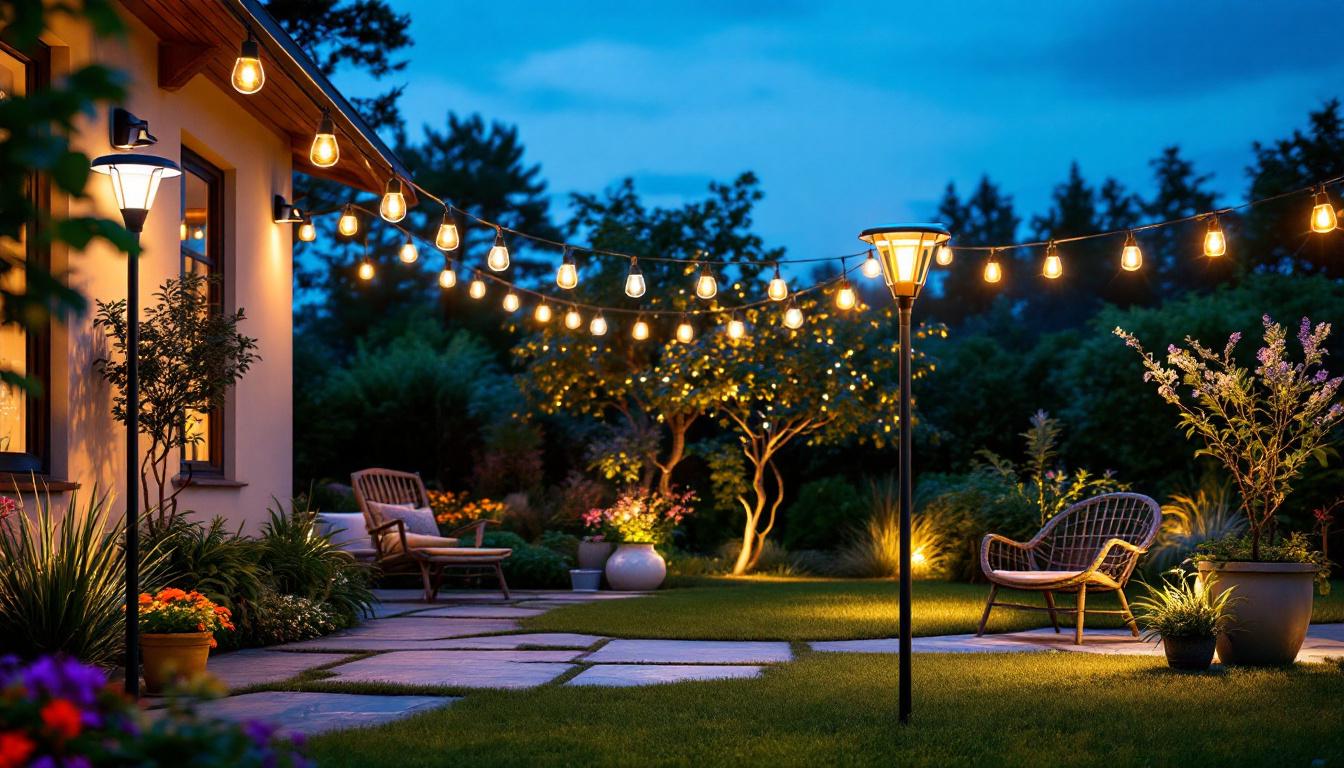
LED (Light Emitting Diode) technology has revolutionized the lighting industry, offering energy-efficient and long-lasting solutions. However, the transition from traditional lighting systems to LED can present challenges, particularly when it comes to installation and compatibility. One of the most common issues encountered is LED bulb flashing, which can lead to frustration and additional costs if not addressed properly.
Before delving into solutions, it is essential to understand the underlying principles of how LED bulbs operate. Unlike incandescent or fluorescent bulbs, LEDs require a specific voltage and current to function correctly. Any inconsistencies in these parameters can lead to flickering or flashing, which not only affects the ambiance of a space but can also indicate deeper electrical issues.
There are several reasons why LED bulbs may flash. Understanding these causes can help contractors avoid costly mistakes in their lighting projects. One primary cause is incompatible dimmer switches. Many older dimmers were designed for incandescent bulbs and do not work well with LED technology.
Another common issue is voltage fluctuations. If the electrical supply fluctuates significantly, it can cause LEDs to flicker. This can be particularly problematic in commercial settings where multiple devices draw power from the same circuit. Additionally, loose connections or faulty wiring can lead to intermittent power supply, resulting in flashing bulbs.
Moreover, the quality of the LED bulb itself plays a crucial role in performance. Cheaper, lower-quality bulbs may not have the necessary components to handle variations in voltage, leading to inconsistent lighting. It’s often advisable to invest in reputable brands that adhere to industry standards. Furthermore, environmental factors such as temperature can also affect LED performance; extreme heat or cold can alter the electrical characteristics of the bulbs, contributing to flickering issues. Understanding these nuances can empower users to make informed decisions when selecting LED products for their spaces.
Additionally, the installation process itself can introduce complications. For instance, if LED bulbs are placed in fixtures that are not designed for their specific heat dissipation needs, it can lead to overheating and subsequent failure. Proper ventilation is essential to ensure that LEDs operate efficiently and maintain their longevity. Furthermore, utilizing compatible fixtures and ensuring that all components in the lighting system are designed for LED use can mitigate many of the common issues associated with flashing bulbs, creating a more reliable and enjoyable lighting experience.
Choosing the right components is crucial to the success of any lighting project. This includes selecting compatible LED bulbs, fixtures, and dimmers. When working with LED technology, it is vital to ensure that all components are designed to work together seamlessly. The right combination can enhance energy efficiency, extend the lifespan of your lighting, and create the desired ambiance in any space.
When selecting dimmers for LED installations, it is essential to choose models specifically designed for LED bulbs. These dimmers often feature a wider range of compatibility and can handle the lower wattage of LED bulbs without causing flickering. Additionally, many modern dimmers come with adjustable settings to accommodate different types of LED lighting. Some advanced dimmers even offer smart technology integration, allowing users to control lighting through mobile apps or voice commands, providing unparalleled convenience and customization.
Contractors should also consider the total wattage load on the dimmer. Exceeding the recommended load can lead to overheating and potential failure of the dimmer switch. Always refer to manufacturer guidelines to ensure compatibility and safety. Furthermore, it’s wise to test the dimmer with the specific LED bulbs in a controlled environment before full installation, as this can help identify any issues early on and ensure optimal performance.
LED drivers play a critical role in regulating the power supplied to LED bulbs. They convert the alternating current (AC) from the electrical supply into the direct current (DC) that LEDs require. Using the wrong driver can lead to inconsistent performance, including flashing or flickering. A well-chosen driver not only ensures stable operation but can also enhance the overall efficiency of the lighting system, leading to lower energy costs and a reduced carbon footprint.
It is important to select drivers that match the wattage and voltage requirements of the LED bulbs being used. Additionally, ensure that the driver is compatible with the dimming system if dimming functionality is desired. This attention to detail can prevent many common issues associated with LED installations. Moreover, consider the thermal management of the driver; some models come with built-in heat sinks or cooling mechanisms that can prolong their lifespan and maintain performance, especially in environments where heat could be a concern. Understanding these nuances can greatly enhance the reliability and effectiveness of your lighting project.
Proper installation is key to avoiding problems with LED lighting systems. Even the best components can fail if not installed correctly. Adhering to best practices during installation can help ensure a smooth and successful project.
Before installing LED bulbs, it is crucial to inspect all electrical connections. Loose or corroded connections can lead to intermittent power supply, causing bulbs to flash. Ensuring that all connections are tight and secure will help maintain a consistent flow of electricity to the bulbs.
Additionally, using quality connectors and ensuring that wiring is in good condition can prevent future issues. It is advisable to replace any damaged wiring or connectors before proceeding with the installation of LED fixtures.
Once the installation is complete, it is essential to test the entire lighting system before finalizing the project. This includes checking for any flickering or flashing in the LED bulbs. If any issues are detected, troubleshooting should be conducted immediately to identify and resolve the problem.
Testing should also include checking the dimming functionality, if applicable. Adjusting the dimmer settings and observing the performance of the bulbs can help identify compatibility issues that may not have been apparent during installation.
Even with careful planning and installation, issues can arise after the completion of a lighting project. Being prepared to address these problems can save time and money in the long run.
If LED bulbs begin to flash after installation, the first step is to check the dimmer switch. If it is not compatible with LED technology, replacing it with an appropriate model may resolve the issue. Additionally, ensuring that the total wattage does not exceed the dimmer’s capacity is crucial.
If the dimmer is compatible, the next step is to inspect the wiring and connections. Loose connections or damaged wiring can cause intermittent power supply, leading to flashing. Tightening connections and replacing any damaged wiring can often resolve the issue.
When faced with persistent issues, consulting the manufacturer’s guidelines for both the LED bulbs and the associated components can provide valuable insights. Manufacturers often provide troubleshooting tips and compatibility charts that can help identify potential problems.
Additionally, reaching out to the manufacturer’s customer support can provide further assistance in diagnosing and resolving issues. They may have encountered similar problems with other contractors and can offer tailored solutions.
As a lighting contractor, educating clients about LED technology can enhance their understanding and appreciation of the benefits of LED lighting. This knowledge can also help manage expectations and reduce the likelihood of issues arising after installation.
One of the most significant advantages of LED lighting is its energy efficiency. Educating clients about how LED bulbs consume significantly less energy compared to traditional bulbs can help them appreciate the cost savings over time. Additionally, highlighting the longevity of LED bulbs can reassure clients about their investment.
Clients should also be informed about the potential for dimming capabilities and how this feature can enhance the ambiance of their spaces. Providing examples of successful installations can help illustrate the benefits of LED technology.
Clients should be made aware of basic maintenance practices to ensure the longevity of their LED lighting systems. This includes periodic inspections of fixtures and connections to prevent issues from arising. Providing clients with a simple troubleshooting guide can empower them to address minor issues without needing to call a contractor.
By fostering a collaborative relationship with clients, contractors can ensure a smoother experience and build trust, which can lead to repeat business and referrals.
In conclusion, LED bulb flashing can be a frustrating issue for contractors and clients alike. However, by understanding the technology, selecting compatible components, adhering to best installation practices, and educating clients, many of these problems can be avoided. Proper planning and attention to detail are essential in ensuring successful lighting projects.
As the lighting industry continues to evolve, staying informed about the latest technologies and best practices will help contractors deliver high-quality solutions to their clients. By prioritizing education and communication, contractors can not only avoid costly mistakes but also enhance their reputation in the industry.
Ultimately, the goal is to create lighting solutions that are not only functional but also enhance the beauty and efficiency of spaces. With careful planning and execution, contractors can achieve this goal while minimizing the risk of issues such as LED bulb flashing.
Ready to elevate your lighting projects with the highest quality products at the best value? Look no further than LumenWholesale. Our spec-grade lighting solutions are designed to meet the needs of the most demanding projects, ensuring you avoid common issues like LED bulb flashing. With unbeatable wholesale prices and the convenience of free shipping on bulk orders, you can trust LumenWholesale to provide reliable, high-performance lighting without the inflated markups. Don’t compromise on quality or cost—explore our selection and start saving today.

Discover why LED garage light fixtures are becoming a pivotal element in the lighting industry.

Discover the secrets to mastering track lighting kits with insights tailored for lighting contractors.

Discover how wire adapters can transform lighting installations into profitable ventures.

Discover how powerful solar lighting transforms modern lighting solutions, offering eco-friendly, cost-effective, and reliable illumination—learn key benefits and optimize your space today!.